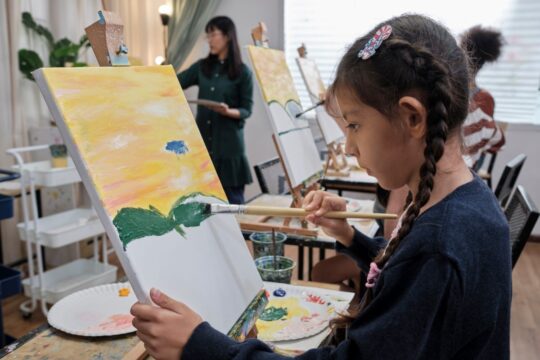The spring of 2020 has been an unprecedented time for our world, and the field of education is no exception to its plight. Prior to the dawn of the COVID-19 pandemic, online learning was woven into the fabric of our schools’ respective curriculums to varying degrees depending upon factors like access to resources and training. Seemingly overnight, teachers and students across the United States were thrust into immersive online learning during a worldwide pandemic. For most teachers, this degree of online learning is new and not without challenges.
Whether learning in a physical classroom or online, effective classroom management is key to a productive environment. Although students are not contained in a single room, teachers must be intentional about managing student behavior and engagement in an online setting. Below are some challenges of learning in an online environment that teachers can anticipate, and online classroom management strategies to effectively overcome those challenges.
Challenges Online Learning Environments Can Present
Many of the challenges of online learning stem from student engagement. When learning online, students don’t have the benefit of a teacher’s physical presence moving about the room and monitoring learning engagement. Outside of video conferencing and other technology tools that some teachers are fortunate to access, students do the bulk of online learning independently. Maintaining motivation is more challenging for students, and it is admittedly more difficult for teachers to motivate students remotely.
Furthermore, using a plethora of technology for learning can present classroom management challenges that are similar to the physical classroom. For example, students can still be disruptive during live sessions or use collaborative time unproductively. Cheating and plagiarism are often amplified with the world at their fingertips and their teachers remaining distant. Whether online or in person, students are still in need of structure and support in order to self-regulate their behavior.
Classroom Management Strategies for eLearning
Whether you were hurled into elearning through unforeseen circumstances or you are amongst the many teachers who have chosen to educate our youth online, these are some strategies that can help you maintain a well-managed online classroom environment.
Build an Engaging Experience
I will reiterate the point that low learning engagement is the gateway to many issues in online learning. It is important to build a learning experience that will be engaging for your students. Take time to understand what interests them, where their strengths lie, and what their challenges are. Use this information to build an online classroom management plan that is tailored to your students and provide multiple opportunities for interactive learning.
Cultivate Community Amongst Students
Building a positive relationship between teachers and students is only part of the battle of cultivating a productive learning environment. Community amongst students is just as important during online learning as it is in the traditional classroom. For a student, it is easy to feel isolated in online learning. Build in opportunities for students to collaborate and even socialize.
Establish and Reiterate Routines
Routines are important in any learning environment, especially when you can’t be present with your students daily. Simplifying routines is wise. For example, how students submit work and receive feedback should be consistent throughout the course. Set up office hours for students to contact you and stick to them. Also, maintaining some consistency with the work assigned each week will help students establish their own routines at home. Lastly, it is important to reiterate your routines often.
Educate Students about Plagiarism
Online learning lends itself to increased plagiarism. Students are working on technological devices with access to endless resources, and the temptation to copy information can feel insurmountable for students. I suggest that every online teacher combat plagiarism from day one. Let students know what it is and provide examples. Outline the consequences for plagiarism as well.
Establish Communication Norms
Communication in an online environment is a unique skill that our students will indubitably use in the future. Setting norms for communication with teachers and between students will be crucial to classroom management online. When video conferencing, for example, establish norms and expectations for things like background noise, camera use, and contributing to discussion ahead of time. Norms are also necessary for typing in online forums as well. Remember that we are working with students, and you will encounter some who don’t understand online communication etiquette and others who will need to understand consequences to prevent unacceptable use of communication tools.
Set Expectations and Be Consistent
When you establish norms and routines, it is important to expect that students follow them and be consistent in your response when they don’t. Let students know about consequences and penalties up front and stick to your word. You will have students who don’t meet your expectations, just as you do in the traditional classroom. Have a plan in place for when this happens, and make sure students and parents are aware of this plan.
Acknowledge Student Accomplishments
When students are productive, engaged, and learning online, it is important to acknowledge them. This is, of course, important in every classroom. Online students will not get to see a smile of pride or receive a congratulatory high five from teachers like they can in the physical classroom. Use the communication avenues available to you to let students know when they are on the right track. Positive reinforcement yields higher engagement, and higher engagement is the key to a well-managed online classroom.




